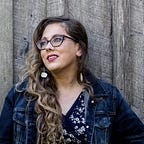Invisibility of Life
“Without light I am not only invisible, but formless as well; and to be unaware of one’s form is to live a death.” — Ralph Ellison, Invisible Man
What does it mean to be formless? To exist in the world without a shape? Were they born this way or did history twist in on itself, changing them as it went? The earth was formless and void in the beginning, so the story goes. Were people the same? Can their forms be made, and if they can be made, can they be removed? Or is our form given to us with our skin color, the gift of visibility woven into our DNA?
What does it look like to be a fully formed human being, and what does it look like to be malformed, deformed, unformed? If a person were to refuse to use their eyes to see, will their eyelids simply not open one day? If they refuse to hear the cries of the wounded, will their ears fall off? What is humanity and who deserves the prize for attaining it? The light is the truth and the truth is the light he says, but what is the light doing? Does it illuminate the invisible, or does it blind with the power of its whiteness? All color is absorbed into white light; does this make light colorblind? Light creates rainbows and shadows, so what is the truth?
The invisibility of life haunts us. We fight against the ghosts of the past and the imaginations of the future. The fears in our minds’ eye are there, but without tangible form to fight. We imagine ourselves to be brave, that when confronted with that which we fear, we would have the courage to face it straightaway, but in truth we shy away. Because so often our fears come in the shape of other people, and so we turn away from them and the truths of ourselves, for it is shameful to be afraid, and embarrassing to know that one will choose the fear over the person.
Who told you that you were naked God asked in the garden, and who told you that you were formless? Adam and Eve sewed clothes for themselves while we formless find our shapes by sewing soul to skin, as if we were both Peter and Wendy. We attach our humanity to our visibility and claim our essence for ourselves. Shining a light on things formerly unseen requires facing things in us we would rather not see, because why were we choosing to not see? Why are we so willing to spend money and effort to invent technology to explore the stars and dark matter, but we’re so unwilling to investigate the unknown and unseen mysteries in the heart of humanity?
Who can say I see you to another person and really mean it? Do you? Do you see their flaws, their quirks, their annoying habits, along with their jokes and thoughts and tears? Can anyone truly be visible? Then why do so many feel invisible, as if we know instinctively this is not the way it should be?
When being made invisible, at least the invisiblee knows who he is. The one doing the looking has no idea who either of them are. What does it take for those who have been forced into the shadows to be seen? Who will adjust the aim of the light to reveal the invisible? Who will refuse to turn the light away when the hidden walk into it? Who among us will look through and past the glaring whiteness of the light to see those we have been taught to ignore? Who will choose to be formed in the fullness of humanity, the fullness that recognizes the true shape of the other? Let those who have eyes, to see, and ears, to hear.
How does the invisibility of whiteness contribute to the invisibility of others? How does our unawareness of ourselves as a racial people blind us to reality? Their invisibility is true and not true. Race a fiction, but also a fact.
The lucky ones among us are the ones who have put themselves together again. Or, maybe, the unlucky among us. For they know what it is to be assured of one’s being and yet they live in a world that does not understand what it is to live whole. They are seen past and through, papered over with assumptions and stereotypes. What does it mean to be visible to oneself and also visible to the world? Must they always be mutually exclusive?
When a person looks at another and instead sees nothing, it isn’t merely that the person disappeared in front of their gaze leaving a void; but that the void has been filled. Instead of a human they see fears and myths. Distorted stories blending into stereotypes. The visibility makers have twice as hard a job to do. They must not only see the fog of their own biases, but they must peer through them, to the person. And only after much practice does the fog begin to fade. Can the essence of humanity be bestowed or stripped away with a gaze?
What does it cost to be seen? What if the shame of the garden is worth the price? Where does one pay?
